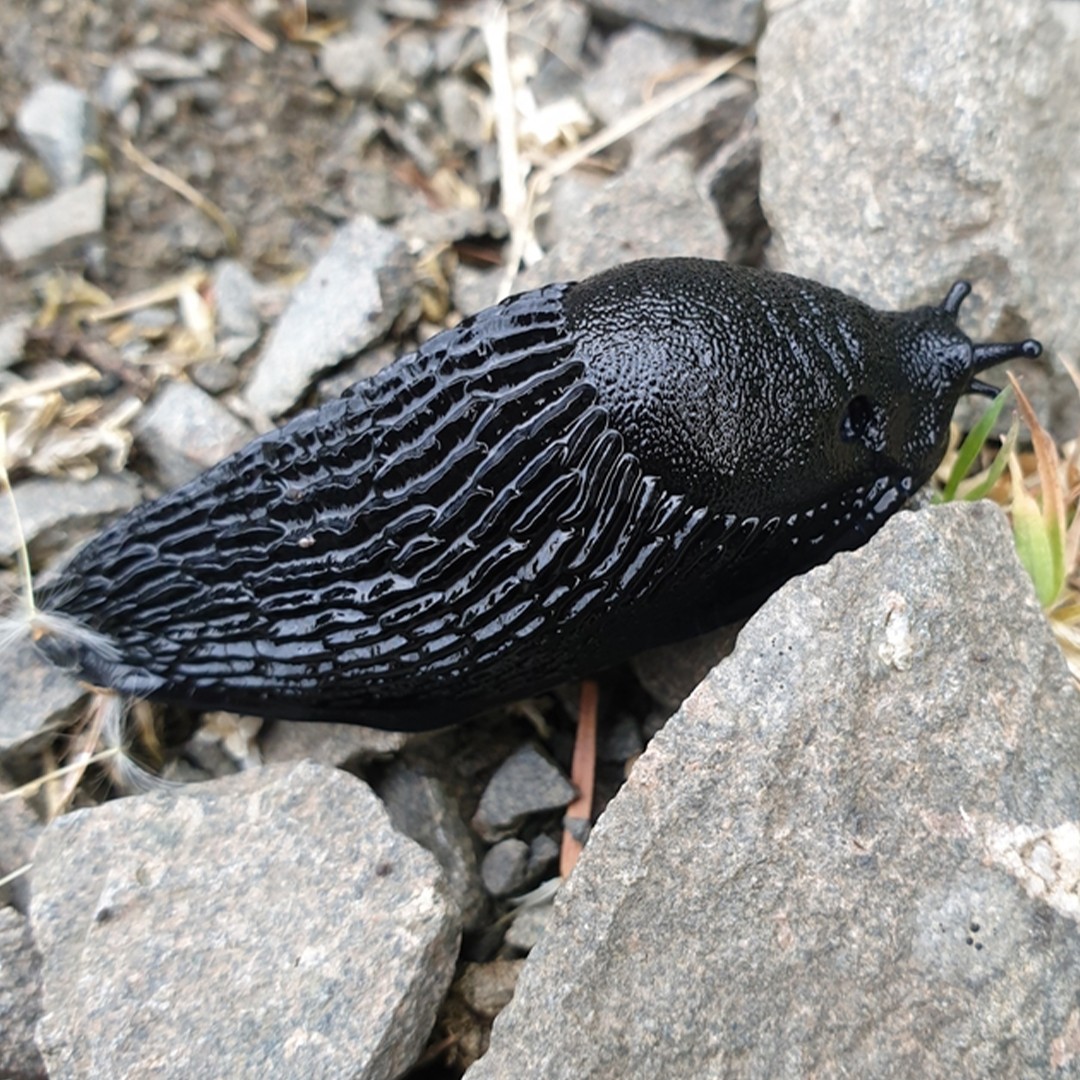Black arion
A species of Arion slugs, Also known as European black slug, Black arion slug Scientific name : Arion ater Genus : Arion slugs
Black arion, A species of Arion slugs
Also known as:
European black slug, Black arion slug
Botanical name: Arion ater
Genus: Arion slugs
Content
Description People often ask
 Photo By jon_halliwell , used under CC0-1.0 /Cropped and compressed from original
Photo By jon_halliwell , used under CC0-1.0 /Cropped and compressed from original Description
Arion ater varies from 10–15 cm(3.9–5.9 in), reaching maturity at about 2.5 cm(1.0 in) and speed up to 4,5 cm/min or 2,54 m/h The black slug is generally deep black, with some adults being brown or even white. Generally, pigmentation darkens directly with increasing latitude. Young specimens tend to be brown or ivory whitish, turning to grey before becoming characteristically black at maturity.ref name="web">Arion ater on Animal diversity web Rust-brown individuals are arguably classified as a separate species Arion rufus (Red Slug). The two can only be distinguished by dissecting the reproductive anatomy. The foot-fringe is black, the tubercles are large and elongate, and the sole is blackish grey. The atrium and vagina (genitalia) are considerably narrower than is the spermatheca (organ for storing sperm). The oviduct is narrow while the spermatheca is spherical. The black slug is omnivorous, and its diet includes fungi, carrion, earthworms, leaves, stems, dead plant material and dung. The food is shredded into tiny pieces by the radula and is then digested by enzymes. Reference: http://enfo.agt.bme.hu/drupal/en/node/10944 Like other terrestrial slugs, the black slug is a hermaphrodite, preferring to find a mate—often several—but can self-fertilize. After mating, the black slug seeks a dark, moist environment such as beneath mosses—occasionally within topsoil—to lay its eggs about 5mm (0.2 in) in diameter. Between August and October, an individual slug lays up to 150 eggs every one to three weeks—clutches diminishing to 20 eggs late in the season. Juveniles hatch after at least twenty-seven days, hatching later under cold temperatures. Maturation takes up to nine months, enabling mating in early summer. Black slugs die shortly after laying its last clutch, rarely surviving into a second year. The ovotestis (gonad or hermaphrodite gland) produces gametes at the proximal end of the reproductive system. The hermaphrodite duct runs forward, connecting to the albumen gland and the common duct (spermoviduct). The male and female gametes separate before entering the common duct. The male portion of the reproductive tract contains the vas deferens and the epiphallus. Arion slugs lack a penis. The vas deferens connects the spermoviduct to the epiphallus. The epiphallus then opens to the genital atrium. The spermathecal duct (bursa copulatrix duct) is a sac for storing spermatozoa and also enters the atrium. The female portion contains the oviduct, transferring eggs from the common duct to the atrium. The atrium is further subdivided into an upper and lower atrium. A stimulating organ (ligula) can also be found in the atrium. Finally, the atrium opens through the genital pore. The genital pore is located on the animal slightly behind and below the right upper tentacle on the head. Like other members of the family Arionidae, the black slug has a pneumostome (breathing hole) on the right side of its mantle through which it breathes. This mantle is the part in snails that secretes a shell, but in the black slug, the mantle contains a resilient protective structure of calcareous granules. Arion Ater produces three forms of mucus. Thin, more viscous mucus coats the animal laterally, and thicker mucus is secreted along the length of the slug—facilitating wave like contractions of the foot that propel the animal forward. Finally, vile-tasting mucus deters predation. All this mucus prevents the slug from dying from dehydration, and the slugs follow others’ mucus trails in order to mate (or predate).
Colors
Brown
Black
Red
Orange
Habitat
Grassy fields; crops of vegetation; savanna; grassland
* Disclaimer: The judgment on toxicity and danger is for reference only. We DO NOT GUARANTEE any accuracy of such judgment. Therefore, you SHALL NOT rely on such judgment. It is IMPORTANT TO SEEK PROFESSIONAL ADVICE in advance when necessary.
People often ask
Are black arion harmful?
Where do black arion live?
How big does black arion get?
What does black arion eat?

 Photo By jon_halliwell , used under CC0-1.0 /Cropped and compressed from original
Photo By jon_halliwell , used under CC0-1.0 /Cropped and compressed from original